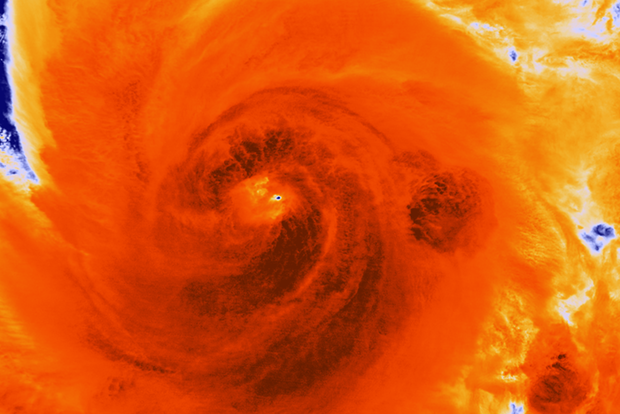Anthropogenic climate change exacerbated impacts of Hurricane Sandy, study says
The Suomi NPP satellite captured this image of Hurricane Sandy on October 25, 2012. Credit: NOAA NESDIS
In a recent study co-funded by CPO’s Regional Integrated Sciences and Assessments (RISA) program published in Nature Communications, the Urban Northest RISA's (CCRUN) Philip Orton along with researchers from Climate Central, Rutgers, and other institutions, confirmed the widespread notion that the flood impacts of Hurricane Sandy were worse because of anthropogenic-induced sea level rise. The team’s simulations indicated that approximately $8.1 billion of Sandy’s damages are attributable to climate-mediated anthropogenic sea level rise. Results also estimated that an additional 71,000 people were affected by the flooding that resulted from higher seas. The research represents a framework that can be used to assess human-caused damage of past and future coastal storms.
Using a high-resolution dynamic flood model, researchers established the link between anthropogenic climate change and global mean sea level rise, while showing that climate change made the storm more intense, increasing the amount of coastline flooding. Their computer model simulated the hurricane’s impact in various tidal and sea level change scenarios, which helped them determine that about 87–92% of observed sea level rise in New York City can be directly linked to anthropogenic climate change.
Read more at the link below.
